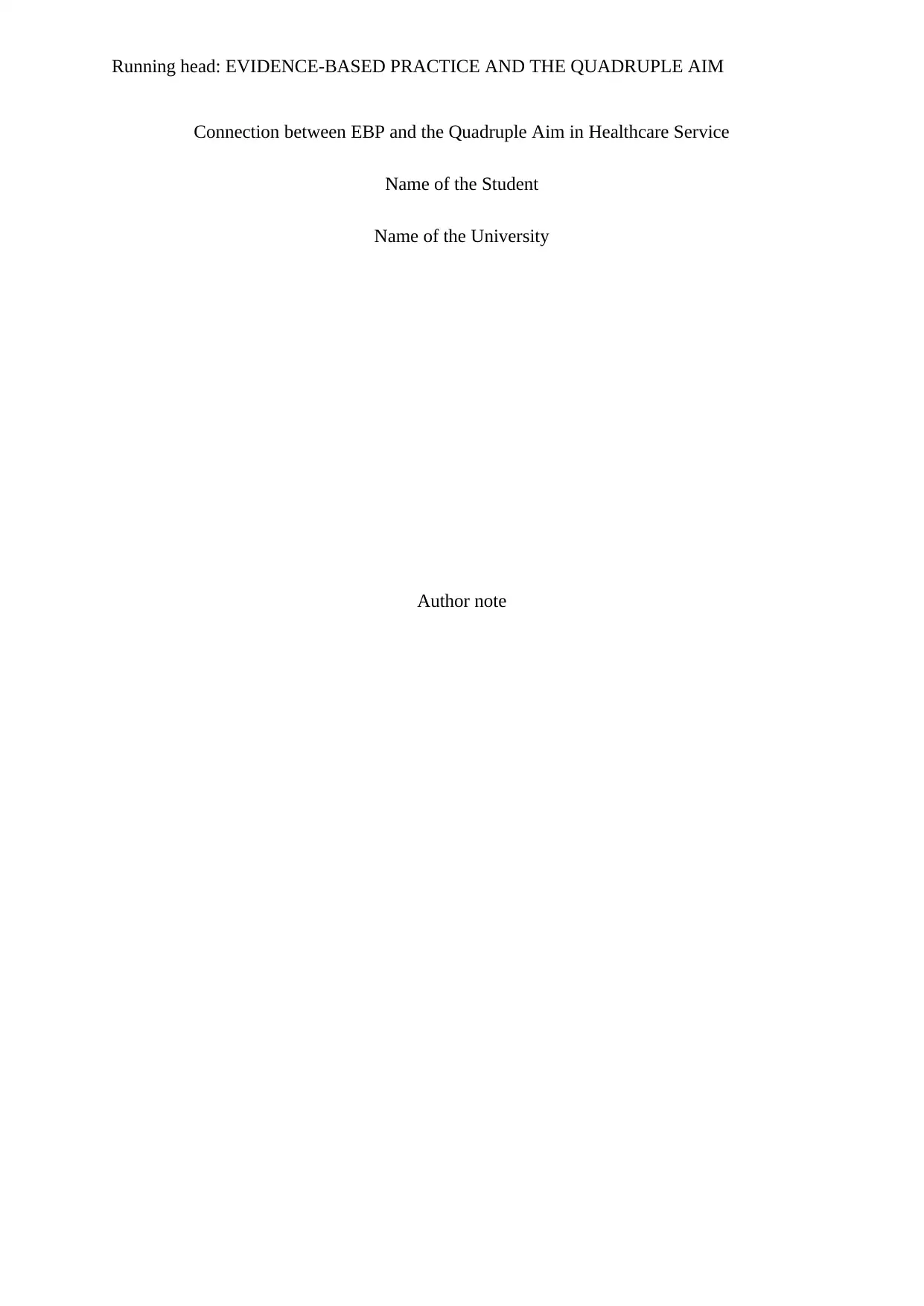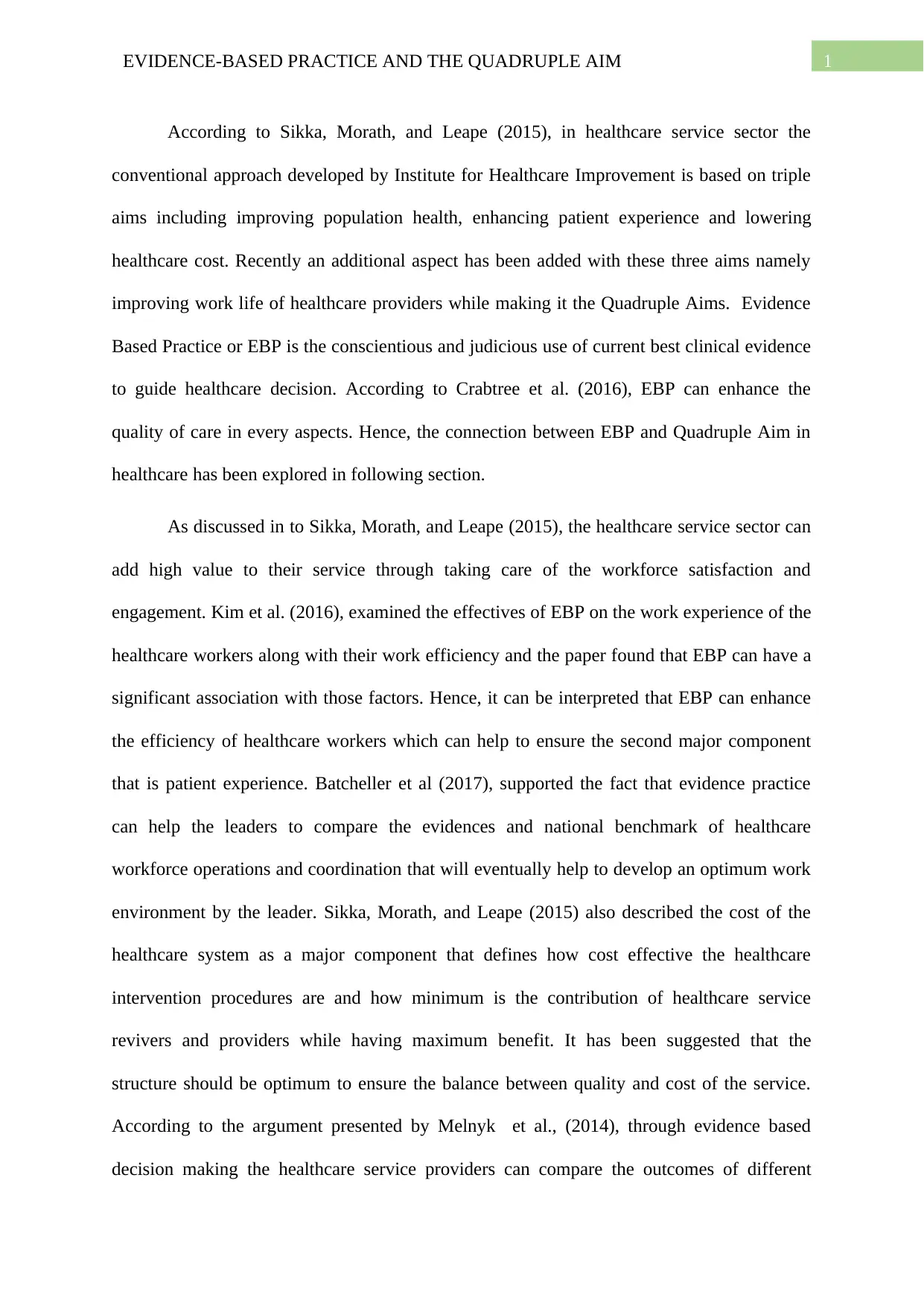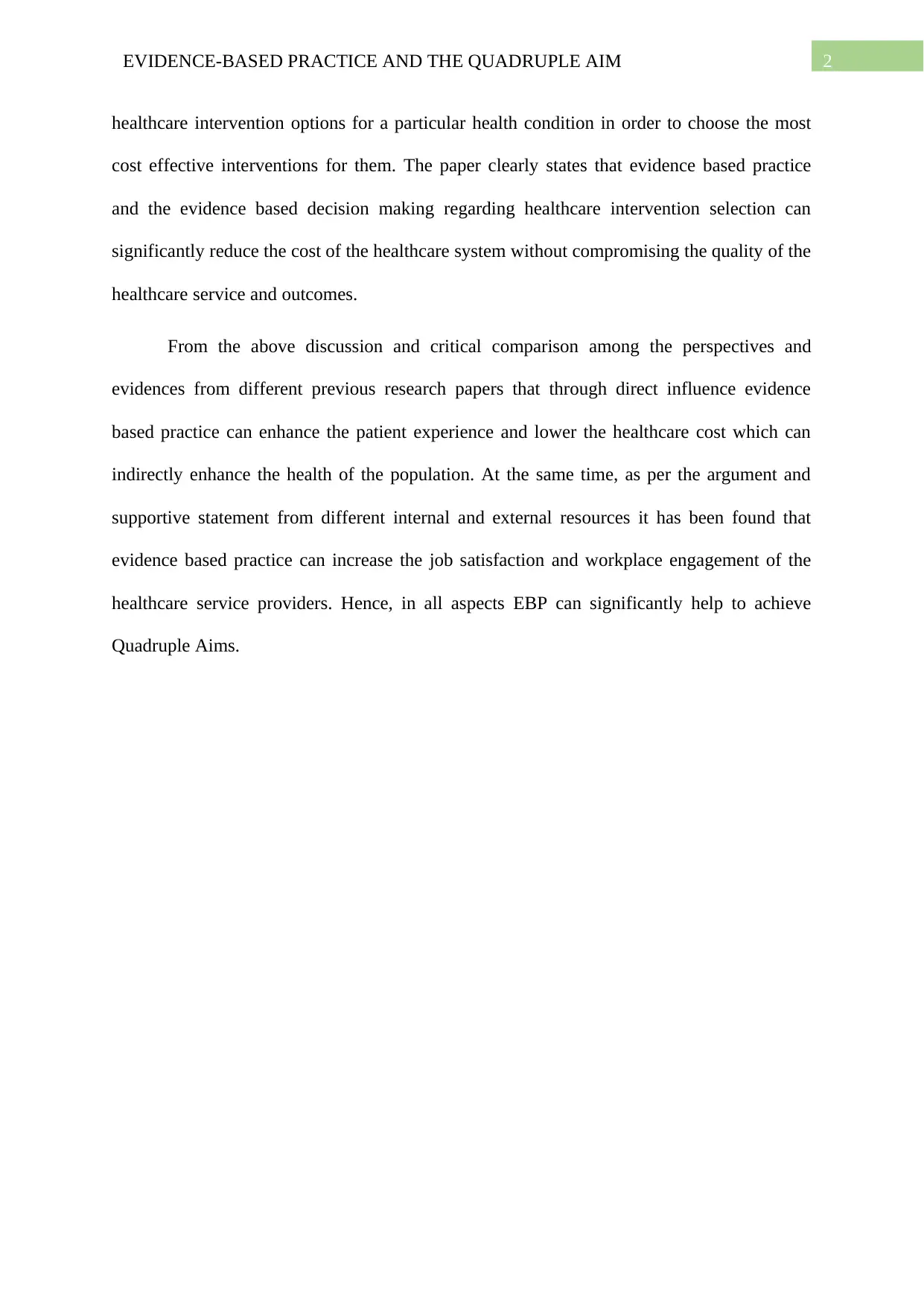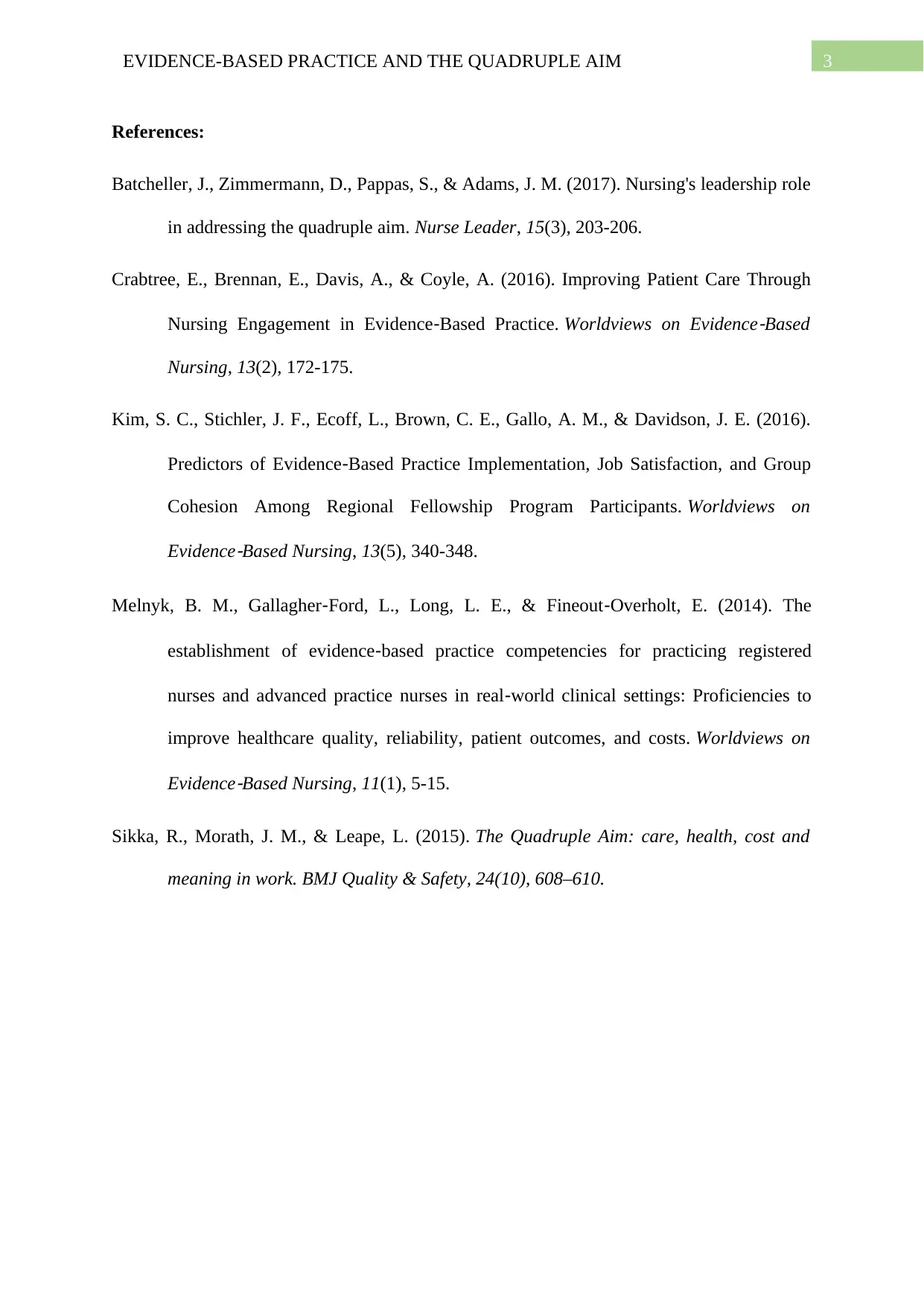The Relationship between EBP and the Quadruple Aim in Healthcare
VerifiedAdded on 2022/08/12
|4
|834
|36
Report
AI Summary
This report examines the critical relationship between Evidence-Based Practice (EBP) and the Quadruple Aim in healthcare, which includes improving population health, enhancing patient experience, lowering healthcare costs, and improving the work life of healthcare providers. The report synthesizes research from various sources, including Sikka, Morath, and Leape (2015), Kim et al. (2016), and Melnyk et al. (2014), to demonstrate how EBP can positively influence each component of the Quadruple Aim. It highlights how EBP can improve patient care quality, reduce costs through evidence-based decision-making, and enhance healthcare worker satisfaction and efficiency. By analyzing the impact of EBP on healthcare operations and outcomes, the report underscores the importance of implementing EBP to achieve the Quadruple Aim and improve the overall healthcare system.
1 out of 4











![[object Object]](/_next/static/media/star-bottom.7253800d.svg)